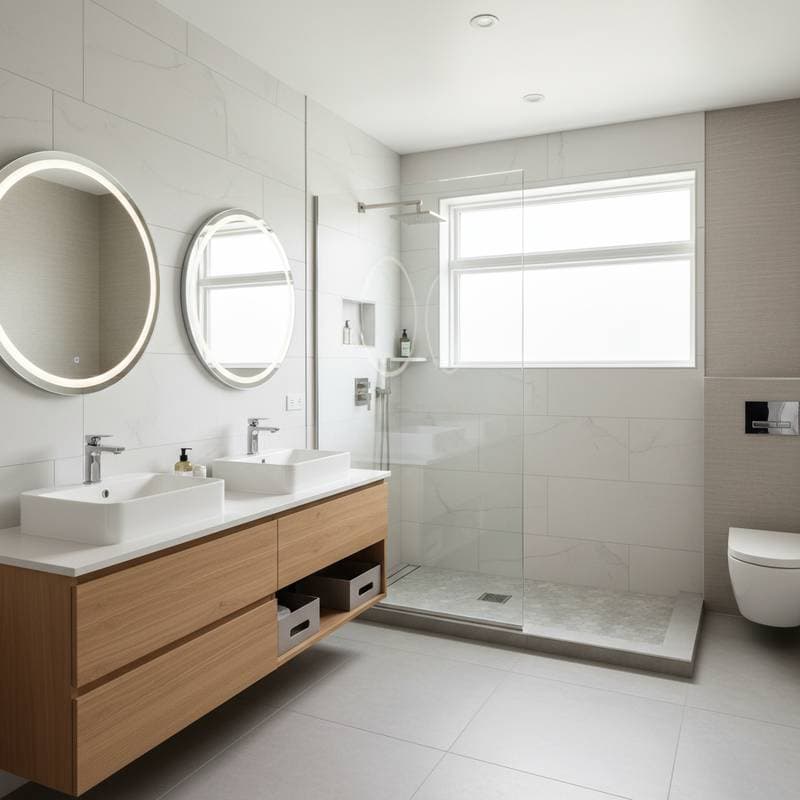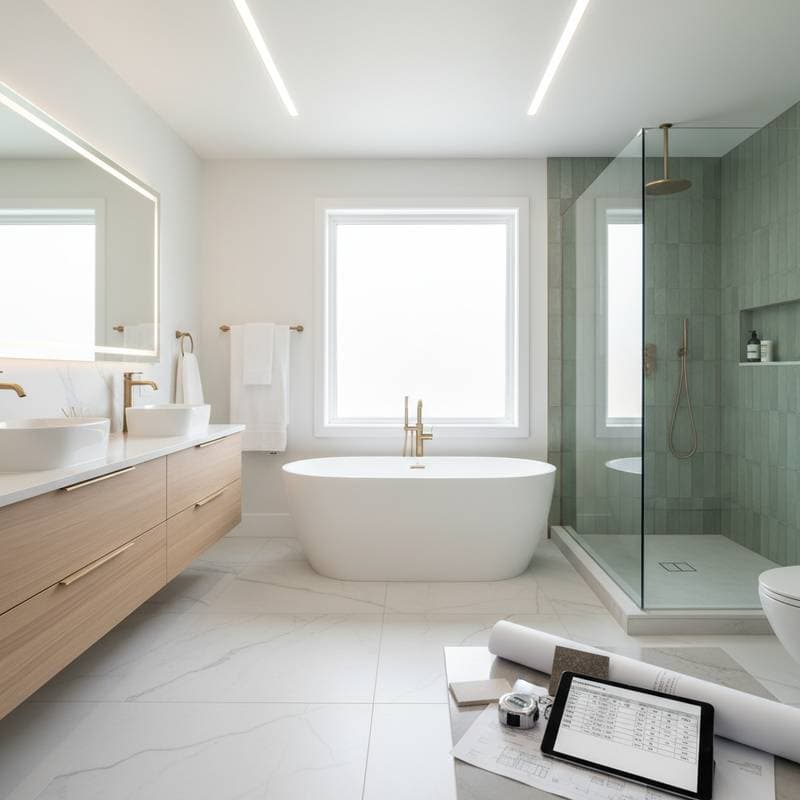Flood-Resistant Flooring Costs and Key Materials
Flood-resistant flooring has become a central focus for property owners looking to protect their investments from water damage. Whether the goal is to prevent costly repairs or to ensure a home remains livable after heavy rainfall or plumbing failures, the right flooring choice can make a measurable difference in long-term resilience and comfort.
Flood-Resistant Flooring Cost Fundamentals
The cost of flood-resistant flooring depends on material selection, installation complexity, and the scale of the project. Across the country, the average homeowner pays between 3 to 10 dollars per square foot for materials that can withstand prolonged contact with water. Installation adds another 2 to 5 dollars per square foot, depending on the region and labor market.
In coastal or flood-prone regions, prices tend to lean toward the higher range. Materials such as ceramic tile or premium vinyl are in greater demand, which drives up costs. In inland areas with lower flood risk, pricing can fall closer to the national midpoint. Local supply chains also influence these variations. Areas with limited flooring distributors often face higher delivery surcharges or extended lead times.
Seasonal demand affects pricing as well. Flooring contractors report that during peak renovation seasons, installation rates can rise by as much as 15 percent. Homeowners planning large projects often schedule installations during slower months to secure better pricing. Economic factors like fuel costs, inflation in construction materials, and supply shortages also shape the final cost of flood-resistant flooring.
Pricing Models and Structures
Flood-resistant flooring services are offered through several pricing structures. Understanding these helps homeowners compare quotes more effectively.
Hourly Rates vs. Flat Fees
Some contractors charge hourly rates for labor, typically between 40 and 75 dollars per hour, especially for smaller replacement jobs. Larger projects usually move to a flat fee structure based on total square footage to provide predictable costs.
Per Unit or Project-Based Pricing
Retailers often quote materials per square foot, while installers may propose a full project quote that includes removal of old flooring, subfloor preparation, and installation. This approach gives a clearer picture of total expenses, avoiding hidden charges later.
Bundle or Package Pricing Strategies
Many flooring companies now offer package deals that include underlayment, waterproof adhesives, and finishing trims bundled into one price. These packages can save up to 10 percent compared to sourcing each component separately.
Subscription or Maintenance Plans
While rare in the residential market, some commercial property managers pay ongoing service fees for inspection and maintenance of waterproof flooring systems. This model ensures long-term performance and early detection of moisture issues.
Service Tiers and Their Price Points
Flooring choices fall into distinct tiers that reflect their performance, durability, and aesthetic appeal.
Basic or Essential Options
Budget-friendly flood-resistant flooring includes sheet vinyl, laminate with moisture-resistant cores, and basic ceramic tile. Prices average 3 to 6 dollars per square foot installed. These materials are suitable for basements, laundry rooms, and rental units where practicality outweighs luxury.
Standard or Professional Choices
Midrange materials such as luxury vinyl plank (LVP), porcelain tile, and engineered stone composite flooring cost between 6 and 10 dollars per square foot installed. These surfaces offer a wider range of colors and finishes, making them popular in kitchens and living areas that require both style and durability.
Premium or Comprehensive Solutions
At the top end, epoxy-coated concrete, sealed natural stone, and marine-grade rubber flooring can reach 12 to 20 dollars per square foot. These are often found in high-end homes or commercial spaces that demand maximum protection and longevity.
Specialized or Bespoke Installations
Custom work, such as integrated drainage systems or radiant heating compatible with waterproof flooring, raises costs further. Expect to pay 20 to 30 dollars per square foot when extensive subfloor modification or advanced sealing technology is involved.
Key Variables Influencing Flood-Resistant Flooring Pricing
Every flooring project is influenced by several key factors that can alter the total investment.
Scope or Size of the Project
Larger installations typically benefit from bulk material pricing. However, they also demand longer labor hours and more preparation, which can offset those savings.
Complexity and Required Skill Level
Installing epoxy or large-format tile requires specialized skills. Contractors with advanced certifications often charge higher rates, reflecting their expertise and the precision needed to prevent moisture intrusion.
Time Required for Completion
Projects with intricate layouts or multiple rooms take longer, which increases labor costs. Fast-curing materials like LVP can reduce installation time, saving on labor compared to slower-setting epoxy or stone.
Materials or Equipment Needed
Subfloor repair, moisture barriers, and adhesive systems can add significant cost. For example, installing a waterproof underlayment may add 1 to 2 dollars per square foot but greatly improves durability.
Add-on Services and Supplemental Charges
Beyond material and labor, several optional services can influence total project cost.
Moisture Barrier Installation
Installing a high-quality moisture barrier beneath flooring is essential in flood-prone areas. Costs range from 0.75 to 1.50 dollars per square foot, depending on the product’s thickness and vapor resistance rating.
Subfloor Leveling
Uneven subfloors must be corrected before laying water-resistant materials. Professional leveling typically costs 1 to 3 dollars per square foot. While optional, skipping this step can lead to buckling or gaps that allow water infiltration.
Baseboard and Trim Replacement
After a flood-resistant flooring upgrade, homeowners often replace baseboards with moisture-resistant alternatives such as PVC or composite wood. This adds 2 to 4 dollars per linear foot.
Expedited or Priority Service Rates
When urgent installation is required after water damage, contractors may charge an emergency service premium of 25 to 40 percent above standard labor rates. This fee covers rapid mobilization and extended work hours.
Comparing Popular Flood-Resistant Flooring Materials
Selecting the right material involves balancing cost, performance, and maintenance requirements. The following overview highlights the most common options available.
Luxury Vinyl Plank (LVP)
Highly durable, easy to install, and fully waterproof. Costs average 5 to 8 dollars per square foot installed. LVP offers realistic wood or stone textures without the vulnerability of natural materials. It is a top choice for homeowners looking for value and resilience.
Porcelain Tile
Dense and nonporous, porcelain resists both water and stains. Installed costs run 7 to 12 dollars per square foot. It performs well in kitchens, bathrooms, and entryways. Proper grouting and sealing are essential to maintain its waterproof properties.
Epoxy-Coated Concrete
A seamless surface that prevents water penetration entirely. Installation costs range from 10 to 18 dollars per square foot, depending on the finish. Epoxy flooring is common in garages and basements but has expanded into modern interior designs for its sleek appearance.
Rubber Flooring
Designed for commercial and gym environments, rubber flooring provides exceptional slip resistance. Costs fall between 8 and 14 dollars per square foot. It performs well in utility areas and flood zones because it withstands repeated exposure to moisture.
Sealed Stone or Polished Concrete
Natural stone and concrete are naturally porous, but when sealed with penetrating waterproof compounds, they become highly resilient. Installed costs vary from 9 to 20 dollars per square foot based on stone type. Granite, slate, and quartzite are preferred for their structural integrity and aesthetic texture.
Economic and Environmental Considerations
The growing emphasis on sustainability has influenced flood-resistant flooring manufacturing. Many brands now produce recyclable vinyl and low-VOC adhesives that improve indoor air quality. Eco-friendly options can cost 5 to 15 percent more, but they appeal to homeowners seeking both resilience and environmental responsibility.
Insurance companies often reward flood-resistant upgrades with lower premiums. According to several property insurance specialists, homes featuring certified waterproof flooring systems experience a 15 to 25 percent reduction in post-flood repair claims compared to traditional flooring. This long-term financial advantage makes the upfront investment easier to justify.
Choosing the Right Contractor
Selecting a qualified installer is as important as choosing the right material. Look for professionals certified by recognized flooring associations or those who provide written warranties. Reputable contractors typically conduct moisture tests and recommend subfloor treatments before installation. Homeowners should request at least three quotes to compare both price and scope of work.
Consumer advocacy groups recommend verifying that the installer carries liability insurance and offers a satisfaction guarantee. These protections ensure support if future moisture problems appear. Many homeowners underestimate how much improper installation can compromise even the best materials.
Making It Happen
Investing in flood-resistant flooring is not only a matter of protection but also of peace of mind. A well-chosen and correctly installed material can save thousands in future repair costs and maintain the comfort of a home during unpredictable weather. Property owners who take time to understand pricing structures, evaluate material performance, and hire qualified professionals set themselves up for lasting success.
The smartest approach combines practicality with foresight. Choose materials that match your budget and lifestyle while considering long-term maintenance and environmental impact.





